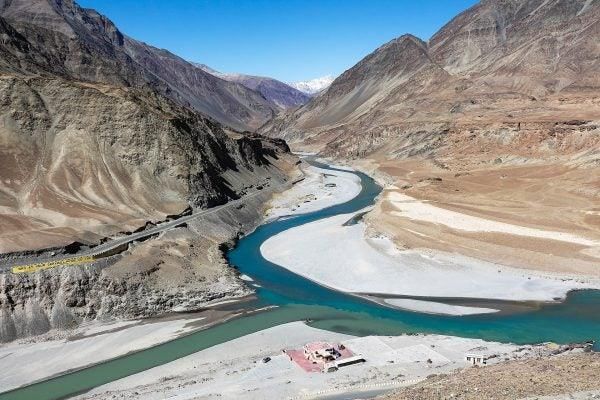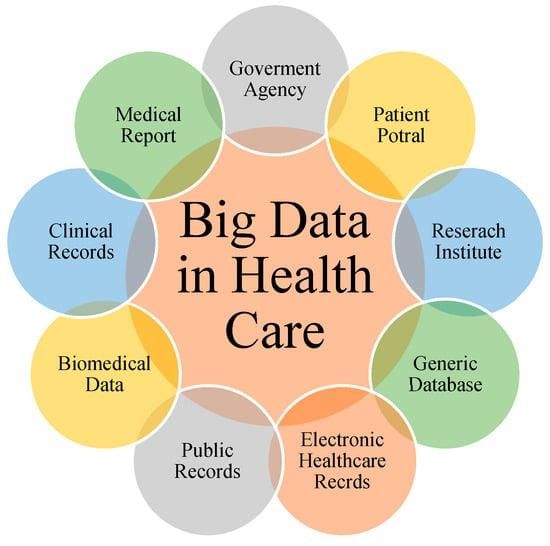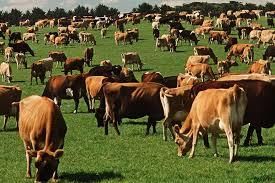UPSC Daily Current Affairs: 6th March 2025 | Current Affairs & Hindu Analysis: Daily, Weekly & Monthly PDF Download
GS3/Science and Technology
Semi-Cryogenic Engine Development by ISRO
Why in News?
The Indian Space Research Organisation (ISRO) has recently achieved a significant milestone by successfully conducting a hot test on the semi-cryogenic engine (SE2000), marking a crucial step towards finalizing the essential cryogenic stage for future space missions.
- The semi-cryogenic engine (SCE) utilizes liquid oxygen (LOX) as an oxidizer and refined kerosene (RP-1) as fuel.
- The engine is designed to produce a thrust of 2000 kN, powering the booster stages of upcoming heavy-lift launch vehicles.
- This technology promises enhanced payload capacity for ISRO's current and future launch vehicles, including the LVM3 and the Next Generation Launch Vehicle (NGLV).
Additional Details
- Higher Density Impulse: The LOX-kerosene combination delivers a greater density impulse compared to the LOX-liquid hydrogen combination, leading to improved performance metrics.
- Cost-Effectiveness: Refined kerosene is more economical and simpler to manage than liquid hydrogen, significantly reducing overall mission costs.
- Operational Efficiency: Kerosene can be stored at ambient temperatures, which simplifies the logistical aspects of storage and handling.
- Difference from Cryogenic Engines: Unlike cryogenic engines that utilize liquid hydrogen, semi-cryogenic engines operate with refined kerosene. This difference makes them lighter and easier to store.
The advancements in semi-cryogenic engine technology are expected to not only enhance the capabilities of ISRO's existing launch vehicles but also pave the way for future innovations in space exploration.
GS3/Environment
Gum Arabic: An Essential Natural Exudate
 Why in News?
Why in News?
Gum Arabic, a critical ingredient in popular products such as Coca-Cola and M&M's, is increasingly being trafficked from regions of Sudan controlled by rebel groups. This situation complicates supply chains for Western companies reliant on this natural resource.
- Gum Arabic is derived from the exudate of acacia trees, primarily Acacia senegal and Acacia seyal.
- The primary production of Gum Arabic occurs in several African nations, notably Sudan, which accounts for around 70% of the global market share.
Additional Details
- Properties of Gum Arabic: It is a dried, water-soluble exudate that is neutral or slightly acidic, consisting of a complex polysaccharide with calcium, magnesium, and potassium ions.
- Gum Arabic is non-toxic, odorless, and has a bland taste, meaning it does not alter the smell, color, or flavor of the products in which it is incorporated.
- It is yellowish in color and insoluble in oils and most organic solvents, but it dissolves completely in hot or cold water, producing a clear, mucilaginous solution.
- Upon hydrolysis, it yields L-arabinose, L-rhamnose, D-galactose, and D-glucuronic acid.
- Historically, Gum Arabic has been used for thousands of years, including as an embalming agent in ancient Egypt.
- It has numerous applications, especially in the food industry, as well as in ceramics, painting, photography, and printmaking.
In summary, the trafficking of Gum Arabic from conflict regions not only poses ethical concerns but also challenges the supply chains of major global companies, highlighting the importance of sustainable sourcing practices.
GS2/International Relations
US-Ukraine Mineral Deal
 Why in News?
Why in News?
The U.S. administration under President Donald Trump and Ukraine are set to finalize a long-discussed minerals deal, following an unsuccessful meeting at the Oval Office.
- The US-Ukraine Mineral Deal is a bilateral agreement designed to grant the U.S. access to Ukraine's extensive mineral reserves, especially critical raw materials.
- A joint Reconstruction Investment Fund will be established, equally managed by both nations, to assist Ukraine in its rebuilding efforts post-conflict.
- Ukraine will allocate 50% of future revenues from its state-owned mineral resources, oil, and gas to this fund for reinvestment in domestic projects.
- The agreement aims to bolster economic relations between the U.S. and Ukraine while helping the U.S. diversify its critical minerals supply chain and lessen reliance on China.
- Notably, the deal does not offer explicit security guarantees for Ukraine, concentrating instead on economic collaboration and resource development.
Additional Details
- Ukraine's Mineral Reserves: Ukraine holds substantial reserves of rare-earth minerals crucial for various high-tech sectors, including aerospace, defense, and renewable energy. According to the Ukrainian geologic survey, the country possesses 5% of the world’s mineral resources, which includes 23 out of the 50 materials classified as critical by the U.S. government.
- This deal is significant for enhancing Ukraine's economic stability and advancing U.S. interests in securing a reliable supply of essential minerals.
In summary, the US-Ukraine Mineral Deal represents a strategic partnership focused on resource development and economic cooperation, though it lacks specific security assurances for Ukraine amidst ongoing geopolitical tensions.
GS3/Economy
Indus River: A Potential Economic Boost
 Why in News?
Why in News?
Recent discoveries in the Indus River bed have revealed substantial gold reserves, estimated to be worth around Rs 80,000 crore. This find holds the potential to significantly enhance Pakistan's struggling economy.
- The Indus River is one of Asia's longest rivers, flowing approximately 2880 km from Tibet to the Arabian Sea.
- It traverses through China, India, and Pakistan, providing essential water resources for various sectors.
- The river basin is historically significant, having supported ancient civilizations, notably the Indus Valley Civilization.
Additional Details
- Geographical Overview: The Indus River originates from Mansarovar in Tibet, at an elevation of about 5182 m. The length of the river in India is 800.75 km.
- Tributaries: Key tributaries include the Sutlej, Beas, Ravi, Chenab, and Jhelum.
- The Indus basin covers an area of roughly 11,65,500 sq. km, with significant portions in Tibet, India, Pakistan, and Afghanistan.
- Historical Significance: The river was crucial for the development of the Indus Valley Civilization, one of the earliest urban cultures alongside Mesopotamia and ancient Egypt, flourishing from around 3300 BCE to 1300 BCE.
- The major archaeological sites of Harappa and Mohenjo-Daro illustrate the river's importance in ancient times.
The discovery of gold in the Indus River not only highlights the region's natural resources but also underscores its historical significance in supporting early civilizations and its ongoing impact on the economy of Pakistan.
GS2/International Relations
Dnipro River
Why in News?
Russia is reportedly conducting repeated and high-risk assaults to cross the Dnipro River in Kherson, incurring significant casualties. This aggressive strategy is part of a broader aim to capture more territory ahead of potential peace negotiations.
- The Dnipro River is one of Europe's major transboundary rivers.
- It is the fourth-longest river in Europe, flowing through several countries.
- The river plays a crucial role in the economies of Ukraine and serves as a vital navigable waterway.
Additional Details
- Geographical Overview: The Dnipro River originates in the low Valdai Hills, west of Moscow, and has a total length of 1,368 miles. It flows through western Russia, Belarus, and Ukraine before emptying into the Black Sea.
- River Basin: The river basin covers approximately 504,000 sq.km, with 289,000 sq.km of this area located in Ukraine, constituting 48 percent of its total area.
- Urban Centers: The Dnipro River flows through many significant urban centers, including Smolensk and Dorogobuzh in Russia, as well as Mogilev in Belarus, and major Ukrainian cities such as Kiev, Cherkasy, Dnipro, and Zaporizhia.
- Navigability: The river is an essential navigable waterway for Ukraine’s economy and is linked to other European waterways through the Dnieper–Bug Canal.
- Tributaries: The Dnipro has around 32,000 tributaries, including notable rivers such as the Sozh, Desna, Trubizh, Bilozerka, Drut, Berezina, and Prypiat.
The Dnipro River holds historical significance as a natural barrier dividing Ukraine into right and left banks, making it strategically important in current territorial disputes.
GS3/Environment
Discovery of Crassolabium dhritiae
Why in News?
Recently, scientists from the Zoological Survey of India (ZSI), located in Kolkata, announced the discovery of a new species of soil-dwelling nematode named Crassolabium dhritiae. This significant finding occurred in the Deccan Peninsular biogeographic zone, particularly within the Keonjhar district of Odisha.
- New Species: Crassolabium dhritiae is a newly identified nematode species.
- Recognition: The species is named in honor of Dhriti Banerjee, the director of ZSI, for her exceptional contributions to zoology and taxonomic research.
- Physical Characteristics: The nematode exhibits a medium-sized, slender body with a rounded lip region, wide odontostyle, a long pharynx, distinct female reproductive structures, and a uniquely shaped tail.
- Feeding Habits: While the exact feeding behaviors of Crassolabium dhritiae are under investigation, species within this genus are known for both predatory and omnivorous tendencies.
- Species Count: The discovery of dhritiae increases the total number of recognized Crassolabium species globally to 39, with nine species now documented in India.
Additional Details
- About Soil Nematodes: These are tiny invertebrates crucial for maintaining soil fertility. They inhabit all soil types, including poor soils, with millions present in every square meter.
- Feeding Dynamics: Nematodes consume plant roots and various soil organisms, including bacteria, fungi, algae, and other small invertebrates.
- Beneficial Roles: Some nematodes are beneficial, aiding in the decomposition of organic matter and nutrient recycling in the soil.
- Indicators of Soil Health: Nematodes serve as valuable indicators for assessing soil health, as their populations can indicate changes in soil conditions due to disturbances or pollution.
This discovery not only enhances the understanding of nematode diversity but also underscores the importance of soil health and biodiversity in ecosystems.
GS3/Defence & Security
NITI Aayog Releases Paper on the National Security Implications of Quantum Computing
Why in News?
The NITI Aayog, a prominent policy think tank in India, has published a comprehensive report that examines the national security implications of quantum computing technology. This report is timely and significant given the rapid advancements in this field.
- The report emphasizes the strategic importance of quantum computing and its potential impact on national security.
- It highlights the urgent need for India to adopt measures like post-quantum cryptography (PQC) to safeguard its data and technology.
- The document serves as a foundation for India's strategic preparedness and policy formulation in the quantum landscape.
Additional Details
- Strategic Importance of Quantum Computing: The NITI Aayog's Frontier Tech Hub warns that countries possessing quantum capabilities may gain an unprecedented strategic advantage, which could threaten India's national security and economic interests.
- The report stresses the necessity for India to assess its vulnerabilities and enhance its technological capabilities through international partnerships.
- Cybersecurity and Military Implications: Quantum computers have the capability to break current encryption methodologies, posing risks to secure communications and financial systems. This technology could also transform military capabilities, granting advantages to early adopters.
- Global Quantum Investments: Over $40 billion has been committed globally towards quantum technology development, with China leading at $15 billion, followed by the United States with $5 billion and India contributing $750 million via its National Quantum Mission (NQM) launched in 2023.
- Despite lower public investment, India is recognized for its strengths in frugal innovation, evidenced by its cost-effective space missions.
- Growth in Quantum Hardware and Startups: Indian startups are emerging in the quantum sector, focusing on components like ultra-high purity materials and cryogenic systems. Over 170 professors are engaged in quantum research, although India has historically prioritized fundamental science over commercialization.
- Increasing Export Controls on Quantum Technologies: The report notes rising export restrictions on essential quantum components, which may hinder India’s access to necessary technologies, emphasizing the need for domestic development.
- Risk of Strategic Blind Spots: India risks falling behind in technological advancements if it does not keep pace with quantum developments, potentially leading to significant intelligence and economic disadvantages.
- Recommendations for India: The report suggests developing a PQC transition plan, strengthening domestic quantum hardware manufacturing, fostering public-private partnerships, and increasing funding for quantum startups and research.
In conclusion, quantum computing represents a transformative technology with profound implications for national security and global dynamics. Although India has initiated steps toward quantum readiness, the report underscores the necessity for increased investment, supportive policies, and active industry participation to remain competitive in this crucial technological race.
GS2/Governance
Over-centralisation threatens federal health policy
 Why in News?
Why in News?
The recent Supreme Court ruling that abolished domicile-based reservations in post-graduate medical admissions has sparked debates over its implications for public health management and governance in India.
- The court's decision has significant implications for state investment in medical education and healthcare infrastructure.
- Domicile-based reservations play a crucial role in addressing local healthcare needs and retaining medical professionals.
- States may face challenges in staffing public health systems without guaranteed local recruitment.
Additional Details
- Domicile-based reservations: These are quotas in educational institutions or government jobs for individuals who are permanent residents of a particular state or region, designed to address local needs and retain skilled professionals. For instance, in Tamil Nadu, a portion of post-graduate medical seats is reserved for candidates who completed their medical education in the state.
- Supreme Court's Arguments: The court emphasized that domicile-based reservations violate Article 14 of the Constitution, which guarantees equality before the law, and should not restrict access to medical seats based on domicile status, which discriminates against equally qualified non-local candidates.
- Meritocracy in Higher Education: The ruling stressed that merit should be the primary criterion for admissions, citing that domicile quotas dilute academic standards in advanced medical training.
- Impact on State Policies: States may reduce funding for medical colleges if they cannot ensure that graduates will serve locally, potentially weakening public health infrastructure and increasing dependence on external recruitment.
The Supreme Court's decision poses a significant challenge to state healthcare systems, as it diminishes the incentives for states to invest in medical education while potentially widening regional health inequalities. A balanced policy framework that incorporates both merit-based admissions and mechanisms to retain healthcare professionals in underserved areas may be necessary to address these challenges effectively.
GS2/Governance
Phase-III of Suposhit Maa Abhiyan
Why in News?
The Lok Sabha Speaker recently launched the third phase of the Suposhit Maa Abhiyan, a campaign focused on empowering mothers and enhancing the health of pregnant women and newborns.
- The Suposhit Maa Abhiyan is a maternal and child health initiative initiated by Lok Sabha Speaker Om Birla in March 2020 in Kota, Rajasthan.
- The program aims to eliminate malnutrition among pregnant women and newborns through nutritional support, medical care, and health awareness.
Additional Details
- Nutritional Support: Monthly nutrition kits weighing 17 kg are provided to pregnant women.
- Medical Assistance: Regular health check-ups, blood tests, and medication support are offered.
- Health Cards: These cards help track maternal health, nutrition levels, and medical history.
- Adoption Model: One pregnant woman per family can be adopted for support.
- Awareness Drives: Educational sessions on maternal care, infant nutrition, and postpartum health are conducted.
- Mortality Rate Reduction: The initiative aims to increase normal deliveries, healthier newborns, and improved maternal health.
Phases of the Campaign
- Phase 1 (March 2020): 1,000 pregnant women received balanced nutrition kits, along with medical check-ups, medicines, and delivery support.
- Phase 2 (May 2022): 3,000 women received nutrition kits for 9 months, with expanded health monitoring and medical consultation services.
- Phase 3 (February 2025): 1,800+ pregnant women identified for continuous health monitoring, with monthly nutrition kits and health card tracking introduced.
GS3/Economy
Livestock Health and Disease Control Scheme (LHDCS)
 Why in News?
Why in News?
The Union Cabinet has approved a revision of the Livestock Health and Disease Control Programme (LHDCP). The revised scheme has a total outlay of ₹3,880 crore for the years 2024-25 and 2025-26, introducing a new component named “Pashu Aushadhi” aimed at improving the availability of generic veterinary medicines.
- The LHDCS is a government initiative launched in 2022.
- Aims to enhance animal health, control livestock diseases, and improve veterinary services.
- The revised scheme includes ₹3,880 crore for improved veterinary medicine availability.
Additional Details
- Disease Control & Vaccination: This component targets diseases such as FMD, Brucellosis, PPR, CSF, and Lumpy Skin Disease through mass vaccination and eradication efforts.
- Veterinary Healthcare: Involves the expansion of veterinary hospitals and Mobile Veterinary Units (MVUs) to improve access to veterinary care.
- Disease Surveillance: Strengthens disease reporting and monitoring systems.
- There is a significant allocation of ₹75 crore for affordable, high-quality veterinary medicines.
- Sub-Components:
- Critical Animal Disease Control Programme (CADCP): Focuses on eradicating high-risk livestock diseases.
- Establishment & Strengthening of Veterinary Hospitals and Dispensaries (ESVHD-MVU): Expands mobile veterinary units for better access to veterinary care.
- Assistance to States for Control of Animal Diseases (ASCAD): Provides financial support to states for disease prevention and control.
- Economic Benefits: The scheme is expected to prevent livestock mortality and enhance production of milk, meat, and wool.
- Implementation & Funding Strategy:Involves coordinated efforts from Central and State Governments with effective monitoring and assessment mechanisms.
- ₹3,880 crore allocated for 2024-25 and 2025-26, with 100% central funding for CADCP and non-recurring components.
- A 60:40 funding share for other components, and a 90:10 funding structure for North Eastern and Himalayan States.
- 100% central funding for Union Territories.
The LHDCS aims to significantly improve the health and productivity of livestock, thereby enhancing the livelihoods of rural communities and promoting non-farm employment opportunities.
GS3/Economy
Agriculture Infrastructure Fund (AIF) Scheme
Why in News?
Punjab has fully utilized ₹4,713 crore allocated under the Agriculture Infrastructure Fund (AIF) Scheme, making it the top-ranked state in India for implementing this initiative. As a result, Punjab has been granted an additional ₹2,337 crore to further expand its agricultural infrastructure projects.
- The AIF is a ₹1 lakh crore financing facility launched by the Government of India in July 2020.
- It aims to support post-harvest agricultural infrastructure and community farming assets.
- AIF provides medium- to long-term debt financing at subsidized interest rates, along with credit guarantee support to eligible beneficiaries.
Additional Details
- Total Corpus & Disbursement: ₹1 lakh crore, disbursed over 10 years (2020-21 to 2029-30).
- Interest Subvention & Loan Benefits:
- 3% interest subvention on loans up to ₹2 crore.
- Credit guarantee support through CGTMSE and NABSanrakshan.
- Maximum interest rate capped at 9% for a 7-year tenure.
- Eligible Projects:
- Post-harvest infrastructure: Warehouses, cold storage, silos, drying yards, sorting, and packaging units.
- Processing & Value Addition: Food processing plants, oil mills, flour mills, kinnow and cashew processing.
- Technology-driven solutions: Drone projects, hi-tech farm equipment rental centers.
- Renewable energy: Solar-powered irrigation and cold storage units.
- Integration with Other Government Schemes: Can be combined with State & Central subsidies for maximum benefit.
- Implementation & Monitoring: Managed via an online MIS platform for real-time tracking. National, State & District-level monitoring committees ensure effective execution.
- Eligible Beneficiaries Under AIF:
- Individual Farmers: Seeking on-farm storage or processing units.
- Farmer Producer Organizations (FPOs): For community-based infrastructure.
- Self-Help Groups (SHGs) & Joint Liability Groups (JLGs): Engaged in agricultural activities.
- Cooperative Societies & Primary Agricultural Credit Societies (PACS): For collective farming and value addition.
- Startups & Agri-Tech Companies: Developing post-harvest management solutions.
- State Agencies & PPP Projects: Government-backed rural infrastructure projects.
- Entrepreneurs & Agripreneurs: Working in food processing and value addition.
In summary, the Agriculture Infrastructure Fund (AIF) Scheme plays a crucial role in enhancing the agricultural infrastructure in India, particularly benefiting states like Punjab through financial support and incentives aimed at improving post-harvest management and community farming assets.
|
41 videos|5359 docs|1134 tests
|
FAQs on UPSC Daily Current Affairs: 6th March 2025 - Current Affairs & Hindu Analysis: Daily, Weekly & Monthly
| 1. What are the key features of the Semi-Cryogenic Engine being developed by ISRO? |  |
| 2. How does Gum Arabic contribute to various industries? |  |
| 3. What are the implications of the US-Ukraine mineral deal on global supply chains? |  |
| 4. How can the Indus River contribute to economic development in the region? |  |
| 5. What are the national security concerns related to quantum computing as highlighted by NITI Aayog? |  |





















